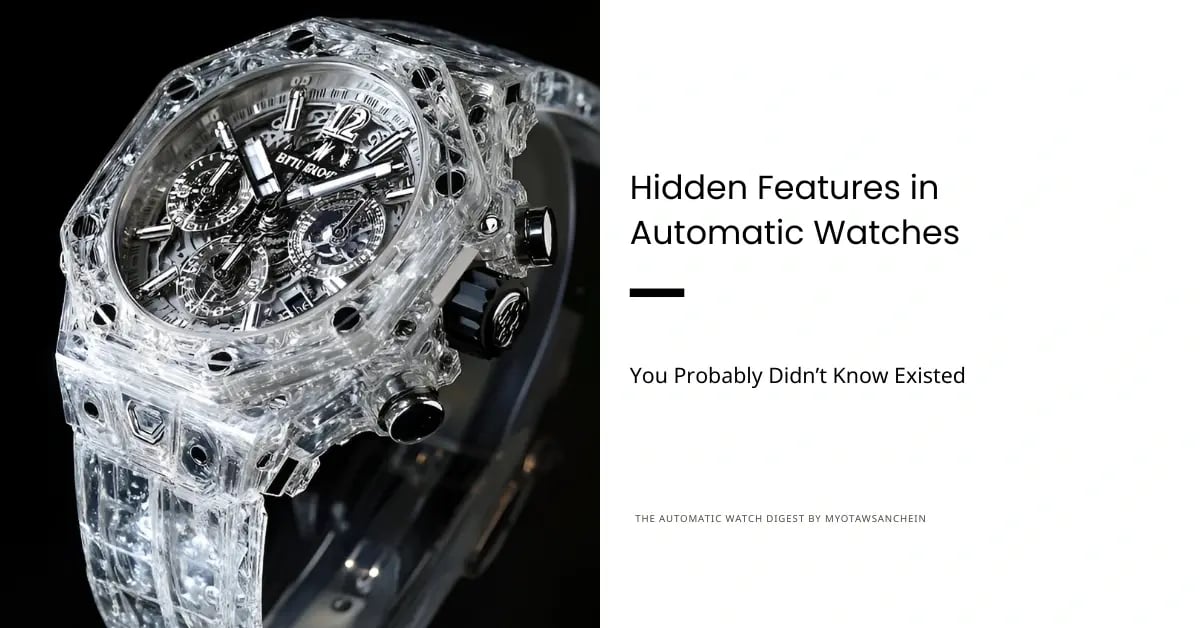
Can You Overwind an Automatic Watch?

Automatic watches are marvels of micro-engineering, blending intricate mechanics with timeless style. Yet, one question frequently surfaces among both new enthusiasts and seasoned collectors: Can you overwind an automatic watch? This concern has led to myths and misconceptions, often causing unnecessary worry for owners. In this comprehensive guide, we’ll debunk the overwinding myth, explain the science behind automatic winding, and offer practical tips for caring for your mechanical watch.
Understanding the Mechanics: How Automatic Watches Wind
Automatic watches, also known as self-winding watches, harness the motion of your wrist to wind the mainspring energy source that powers the watch. Inside the case, a weighted rotor spins as you move, transferring energy to the mainspring via a series of gears. This design keeps your watch running as long as you wear it regularly.
The Overwinding Myth: Can It Really Happen?
The short answer is no, you cannot overwind an automatic watch. Unlike manual-wind watches, which require you to stop winding once you feel resistance, automatic watches are engineered with a built-in safeguard: the slip-clutch mechanism.
How the Slip-Clutch Mechanism Works
Slip-Clutch or Ratchet System: When the mainspring is fully wound, a slip-clutch, sometimes called a bridle disengages the winding process. This means any extra energy from further winding or wrist movement simply slips through, preventing the mainspring from becoming overly tense or damaged.
Continuous Protection: Whether you’re wearing your watch all day, using a watch winder, or manually winding it, the slip-clutch ensures you can’t apply excess force to the mainspring.- No Risk of Damage: Once the mainspring reaches its maximum tension, the mechanism absorbs any additional energy, often dissipating it as harmless frictional heat within the barrel assembly.
Common Myths About Overwinding Automatic Watches
Let’s break down some persistent myths:
- Myth: “If I keep winding, I’ll damage my watch.”
-Truth: The slip-clutch mechanism prevents overwinding, so you’re safe to wind your watch as needed.
- Myth: “Manual winding is bad for automatics.”
-Truth: Manual winding is perfectly fine and can help recharge the mainspring if you haven’t worn your watch in a while.
- Myth: “Watch winders can overwind my automatic.”
Truth: Watch winders simulate wrist movement and, thanks to the slip-clutch, cannot overwind your watch.
Manual vs. Automatic Winding: Key Differences
Manual Watches: Require hand-winding. Overwinding is possible if you ignore resistance, potentially damaging the mainspring.
- Automatic Watches: Wind themselves via rotor movement and can also be wound manually. Thanks to the slip-clutch, overwinding is impossible.
Best Practices for Automatic Watch Care
Wear Regularly: Daily wear keeps your watch wound and running smoothly.
- Manual Winding: If not worn for a while, give your watch 20–40 turns of the crown to start it up. Don’t worry about overwinding slip-clutch will protect it.
- Service Regularly: Even with robust mechanisms, automatic watches benefit from professional servicing every 3–5 years to maintain optimal performance.
- Store Safely: Use a watch winder or store your watch in a safe, dry place when not in use.
Conclusion
Modern automatic watches are designed with advanced engineering to prevent overwinding. The slip-clutch mechanism ensures that, no matter how much you wear or wind your watch, you won’t damage the mainspring. Understanding this feature allows you to enjoy your timepiece without worry, focusing instead on the beauty and precision that make automatic watches so beloved.
So, the next time you wind your automatic watch, rest assured: overwinding is one myth you can confidently leave behind.


